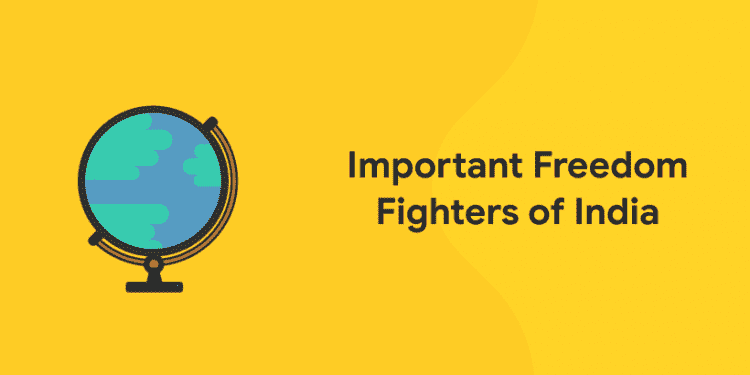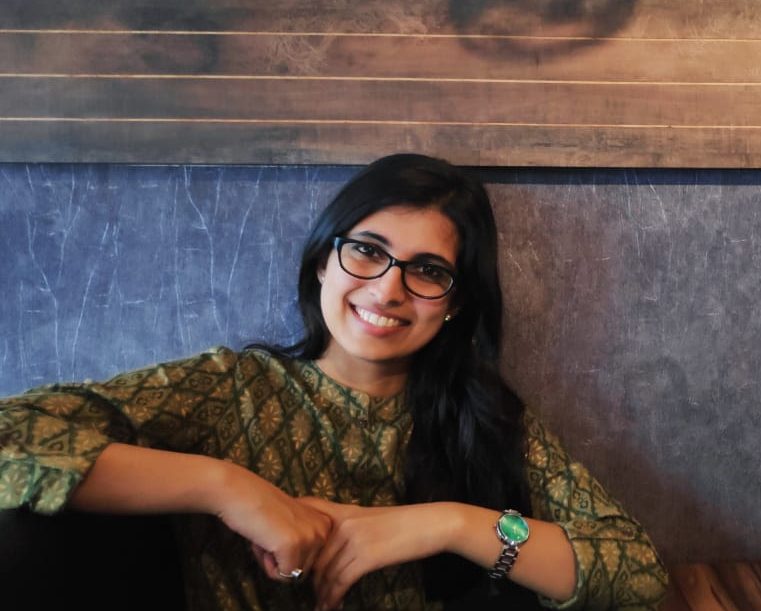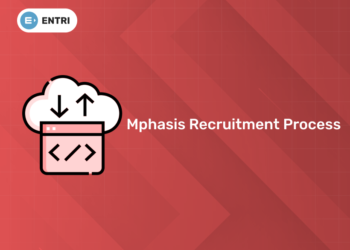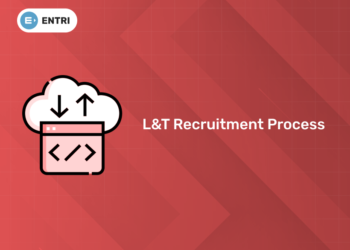Table of Contents
We live under the wings of safety now because of the great personalities who fought for freedom. Yes! Being free means being humane in all its sense. In India, before 1947, the clutches of British rule hounded the corners of the Indian livelihood. As ever movement is raised from the initial voice of distress, India too saw the rise of the alarm for freedom. Know about the freedom fighters of India.
The Struggle for Independence in India
Releasing the British authority and gaining freedom was not a matter of ease. Many eminent personalities dined together to build the path towards freedom. Gandhiji, who is also considered the Father of the Nation, stands as a crucial turn for the freedom journey. But that doesn’t mean the involvement of a single person and his Civil Disobedience has all its grab upon the revolutionary British authority. Many eminent and unnoticed personalities contributed their intelligence, strength and braveness to cut off the chains of colonialism.
Even now and as long the history being questioned and answered, the concern of colonialism will sprout. As long as colonialism shadows upon history, the eminent personalities like Mahatma Gandhi, Kunwar Sigh, Jawaharlal Nehru, Rani Lakshmi Bai Subash Chandra Bose, Lal Bahadur Shastri, Begum Hazrat Mahal will not be forgotten.
Mangal Pandey is regarded as the hero in modern India because he had worked a crucial part in starting the stage of the revolt against the British. Rani Lakshmi Bai is regarded as the symbol of defiance to British rule and was one of the preeminent symbols of the rebels in 1857. In 1876, different movements started against British rule. It was the base of the Indian National Congress (INC).
Surendranath Banerjee placed the base of the party. Bal Gangadhar Tilak, Dadabhai Naoroji, Chittaranjan Das and Jawaharlal Nehru were the main leaders of the INC who stood forward for the political activities. It was Mohandas Karamchand Gandhi who gave a drive to the party and suggested the struggle for freedom in a non-violent way. His Non-Cooperation Movement was a grand success and a stepping stone for the Indian freedom struggle.
Grab the General Knowledge Quiz Now!
List of Indian Freedom Fighters and their Role
1: Who was the first woman President of India?
| Freedom Fighters | Role |
| Mahatma Gandhi | Father of the Nation
Civil Rights Activist in South Africa Satyagraha Civil Disobedience Movement Quit India Movement |
| Kunwar Singh | Indian Rebellion of 1857 |
| Vinayak Damodar Savarkar | Leading figures of Hindu Mahasabha and formulator of Hindu Nationalist Philosophy |
| Dadabhai Naoroji | Unofficial Ambassador of India |
| Tantia Tope | Indian Rebellion of 1857 |
| K. M. Munshi | Founder of Bharatiya Vidya Bhavan |
| Jawaharlal Nehru | Preeminent fighter
First Prime Minister of India |
| Ashfaqulla Khan | Member of Hindustan Republican Association |
| Sardar Vallabhbhai Patel | Civil Disobedience Movement and Quit India Movement
Unification of India |
| Lala Lajpat Rai | Punjab Kesari
Against Simon Commission |
| Ram Prasad Bismil | Founding Member of Hindustan Republican Association |
| Bal Gangadhar Tilak | The Maker of Modern India
Swadeshi Movement |
| Rani Lakshmi Bai | Indian Rebellion of 1857 |
| Bipin Chandra Pal | Father of Revolutionary Thoughts
Swadeshi Movement |
| Chittaranjan Das | Leader in Non-cooperation Movement from Bengal and Founder of Swaraj party |
| Begum Hazrat Mahal | Indian Rebellion of 1857 |
| Bhagat Singh | One of the Most Influential Revolutionary |
| Lal Bahadur Shastri | White Revolution
Green Revolution Second Prime Minister of India |
| Nana Sahib | Indian Rebellion of 1857 |
| Chandra Shekhar Azad | reorganised the Hindustan Republican Association (HRA) under its new name of Hindustan Socialist Republican Association |
| C. Rajagopalachari | Last Governor-General of India
Leader of Indian National Congress |
| Abdul Hafiz Mohamed Barakatullah | Revolutionary Writer |
| Subhash Chandra Bose | World War II
Indian National Congress |
Free UPSKILLING Courses!
Take your first step toward mastering in-demand skills, acing interviews, and securing top-tier jobs with Entri's free upskilling courses.
Start Learning!Freedom Fighters: Brief Biography
Mohandas Karamchand Gandhi
Born on 2nd October 1869, Mohandas Karamchand Gandhi is considered the Father of the Nation for his contributions, strategies for the freedom struggle and sacrifices for India. He not only guided India towards freedom, but he also been displayed the inspirational figure for many independence efforts and rights campaigns across the world. Commonly called Bapu, Gandhi launched the doctrine of non-violence in India. His ideologies contribute to peace and non-violence to attain freedom. The idea of Civil-Disobedience has its an impact in the past days before Independence. He stood as an inspirational figure for the other Nations and was revered all over. His simplicity and gentleness captured the hearts of many. The famous Non-Cooperation movement, Dandi March and the Quit India movement were all begun under his He was assassinated on 30 January 1948, New Delhi
Lal Bahadur Shastri
The Man of Peace or the idol of patience, Lal Bahadur Shastri was born on October 2, 1904, in Uttar Pradesh. Lal Bahadur Shastri was born on 2nd October 1904 in the state of Uttar Pradesh. He was presented with the name of Shastri which in English meant as Scholar. At the age of sixteen, he left his education to join the non-cooperation campaign at the call of Gandhi. Later, he finished his graduation with a first-class degree from Kashi Vidyapeeth. He was a freedom fighter and engaged in several campaigns such as the Quit India movement, Civil Disobedience movement and other satyagrahas motivated by Mahatma Gandhi. Lal Bahadur Shastri was imprisoned by the British for significant times throughout his lifetime. After achieving independence, he became the home minister, the following was made the Prime Minister of India in 1964.
Subash Chandra Bose
Subash Chandra Bose, born on January 23, 1897, stood as a radical nationalist and revolutionary who raised his voice against the political corruption faced by the colonised India.
He referred to the extremist part of the Indian freedom fighters. He was the head of a revolutionary youth wing of Congress from the early years of the 1920s. Bose opposed the ideals of non-violence advocated by Gandhi, rather than strongly suggest only armed forces can bring freedom. The patron of the Forward Bloc, he left the eyes of the British to ultimately reach Germany during the second world war. He raised the Indian National Army (INA).
Bhagat Singh
Shaheed Bhagat Sigh was born in 1907. Bhagat Singh was with the bravest revolutionary Indian freedom fighters. He was a widely questionable, though esteemed figure in the freedom struggle of India. This radical hero was born in a Sikh family. He was included in a plot in 1928 to assassinate James Scott, serving as revenge for the loss of Lala Lajpat Rai. But he mistakenly killed another policeman and had to stay in exile to escape the after-effects of his action. This renowned Indian freedom fighter was later condemned to death by hanging by the British. He was executed at the age of 23.
Click here for the latest General Knowledge Mock Test
Vallabhbhai Patel
The Iron Man of India, Vallabhbhai Patel was born on 31st October 1875. A superior leader of the Indian National Congress, he had extensive participation in the Indian freedom fight and the unification of India into a united country. He was one of the countless important leaders of Gujarat, who designed peasant campaigns against the British based on Gandhi’s ideals of non-violence. One of the first congress leaders to have received the British plan of partition for India, he is recognised for his performance in uniting the princely states into the dominion of India. His efforts led to the combination of around 562 princely states. After independence, he worked as the first home minister and deputy prime minister of India.
Pandit Jawaharlal Nehru
The Chacha Nehru or Pandit Nehru was born on November 14, 1889. He is someone who is widely recollected into the minds on Children’s Day. He was the only child of Motilal Nehru and Swarup Rani Nehru. Nehru was one of the numerous famous advocates and was known for his rational abilities which soon made him one of the most famous politicians India had ever seen. Nehru, after much considerations, accepted the partition scheme for India in 1947 and took the pledge as the First Prime Minister of India after winning independence. His contributions had their significance in Independent India.
Bipin Chandra Pal
Known as the Father of Revolutionary Thoughts, Bipin Chandra Pal was born in 1858 during the period of the Biggest revolution against the British Army. He was an important member of the Indian National Congress and supported the abandonment of foreign goods. He created a trio with Lala Lajpat Rai and Bal Gangadhar Tilak to be recognized as Lal-Bal-Pal where they performed several innovative projects.
Tantia Tope
Tantia Tope was one of the prominent innovators of the Rebellion of 1857. Born in 1814. He guided his soldiers to fight against the injustices and authoritarianism of British rule. He made General Windham abandon Kanpur and served Rani Lakhsmi Bai reappointing Gwalior.
Dadabhai Naoroji
Dadabhai Naoroji is considered as a Grand Old Man of India and his reverence also assures another title as an unofficial Ambassador of India. He was born on 4th September 1825. He was mathematics and natural philosophy educator. He did his graduation from Elphinstone College in Bombay. He bent towards politics next in life and grew very powerful in the field. Dadabhai Naoroji achieved a reputation for his famous opinion on the economic outcomes of British rule in India. In the years 1886, 1893 and 1906, Dadabhai Naoroji had the opportunity of leading the annual sessions of the Indian National Congress. Later this led to the nationalist movement in India. His famous writings incorporate the article named Poverty and Un-British Rule in India (1901).
Prominent Indian Women Freedom Fighters
Rani Lakshmi Bai
The Queen of Jhansi was born in the year 1828. She was one of the numerous intense members of the Revolution of 1857. She encouraged many women crosswise the nation to strive for the freedom of India and to date motivates several women to fight for their equities. She brought her ideologies of freedom and liberty to independent India. These Ideologies were inhabited by later India, where women struggled under the chains of inequality. When the women freedom fighters are unnoticed or less acclaimed, Queen of Jhansi is the right choice to be praised and held in the forefront.
Kasturba Gandhi
Kasturba Mohandas Gandhi was born on April 11, 1869. She served as an Indian political activist, who was a leader in the fight for civil rights and independence from British rule in India. She was the spouse of Mohandas Karamchand Gandhi. Kasturba had undergone no schooling before her marriage, and Mohandas brought it upon himself to give her an introductory knowledge. In 1922 she cooperated in a peaceful civil movement of the Civil Disobedience (satyagraha) campaign in Borsad, Gujarat. She was an active freedom fighter and was a victim of arrest and imprisonment during British Rule.
Sarojini Naidu
Sarojini Naidu wasborn on February 13, 1879, in Hyderabad. She was a political activist, feminist, poet. She was the first Indian woman to be president of the Indian National Congress. She was called “the Nightingale of India.” Against the outbreak of World War II, she helped the Congress Party’s management. In 1947 she grew governor of the United Provinces, a post she preserved until her death.
Begum Hazrat Mahal
A woman who was born into an unfortunate settlement and struck throughout and sold off to the royal harem, Muhammadi Begum Hazrat gave her contributions for the Independence of India. She was given the name, Mahak Pari and later was married off to the Nawab Wajid Ali Shah. This marriage was under a contract. One of her highest participation in the freedom struggle was joining Hindus and Muslims to come together as one force to fight the British. She proved her mettle as a leader. She even performed an important role in supporting and stimulating women to rise out of their homes and join the fight for independence. She thought that women could do anything in the world, fight any fight and come out as champions.
Ace your General Knowledge! Download Entri App!
Kamala Nehru
Kamala Nehru’s entry into the freedom struggle of the country was through the Non-Cooperation Movement of 1921. Kamala Nehru arose as a powerful woman splitting all the conventions and joining her husband in the Indian Independence march. She began a large protest against the stores selling foreign fabric and liquor in Allahabad. Kamala Nehru continued with her battle for freedom even when her husband was imprisoned. She didn’t shut the fire that was ignited for the freedom of India. Patriotism grew stringer in her. She also designed no-tax campaigns with other women aides with the Durgabai and Kamaladevi Chattopadhyaya.
Complete Indian Independence Activists
- Ahmadullah Shah
- Ahmad Saeed Dehlavi
- Alekh Patra
- Alluri Sitarama Raju
- Ambika Chakrabarty
- Amarendranath Chatterjee
- Anant Laxman Kanhere
- Ananta Singh
- Annie Mascarene
- Aruna Asaf Ali
- Asaf Ali
- Ashfaqulla Khan
- Atulkrishna Ghosh
- R. Ambedkar
- Badal Gupta
- Bagha Jatin
- Baikuntha Shukla
- Bal Gangadhar Tilak
- Bankim Chandra Chatterjee
- Barindra Kumar Ghosh
- Basawon Singh
- Batukeshwar Dutt
- Benoy Basu
- Bhagat Singh
- Bhagwati Charan Vohra
- Bhavabhushan Mitra
- Bhikaiji Cama
- Bhupendranath Datta
- Bhupendra Kumar Datta
- Bina Das
- Binod Bihari Chowdhury
- Bipin Chandra Pal
- Chandra Shekhar Azad
- Chittaranjan Das
- Chowdary Satyanarayana
- Dadabhai Naoroji
- Dhan Singh Gurjar
- Dheeran Chinnamalai
- Dinesh Gupta
- Durgawati Devi
- Feroze Gandhi
- Ganesh Damodar Savarkar
- Ganesh Ghosh
- George Joseph (Kerala)
- Hafizur Rahman Wasif Dehlavi
- Seth Harchandrai Vishandas
- Hemchandra Kanungo
- Hemu Kalani
- Inayatullah Khan Mashriqi
- Jatindra Nath Das
- Jawahar Lal Nehru
- Jayi Rajaguru
- Jogesh Chandra Chatterjee
- Kali Charan Banerjee
- Kalpana Datta
- Kamal Nath Tewari
- Kamarajar
- Kartar Singh Sarabha
- Kazi Nazrul Islam
- Khudiram Bose
- Kittur Chennamma
- Komaram Bheem
- Krishnaji Gopal Karve
- Babu Kunwar Singh
- Kushal Konwar
- Lala Lajpat Rai
- Maulvi Liaquat Ali
- Lokenath Bal
- Madan Lal Dhingra
- Madhusudan Das
- Mahmud Hasan Deobandi
- Mangal Pandey
- Manmath Nath Gupta
- Maruthu Pandiyar
- Matangini Hazra
- Maveeran Alagumuthu Kone
- Mazhar Nanautawi
- Mohandas Karamchand Gandhi
- Muhammad Qasim Nanautavi
- Mithuben Petit
- Mufti Abdul Razzaq
- Pazhassi Raja
- Prabhavati Devi
- Prafulla Chaki
- Pritilata Waddedar
- Puli Thevar
- Raja Nahar Singh
- Rajendra Lahiri
- Ram Lakhan Singh Yadav
- Ram Prasad Bismil
- Ramesh Chandra Jha
- Rani of Jhansi
- Rash Behari Bose
- Rosamma Punnoose
- Roshan Singh
- Satyamurti
- Sachindra Bakshi
- Sangolli Rayanna
- Sardar Vallabhbhai Patel
- Sarojini Naidu
- Sah Mal
- Shambhu Dutt Sharma
- Shaukat Ali
- Shivaram Rajguru
- Shyamji Krishna Varma
- Subhas Chandra Bose
- Sri Aurobindo
- Subodh Roy
- Subramania Bharati
- Sukhdev Thapar
- Surendranath Tagore
- Surya Sen
- Sushila Chain Trehan
- Swami Shraddhanand
- Tanguturi Prakasam Pantulu
- Tara Rani Srivastava
- Titumir
- Titusji
- V. Thomas
- Pasumpon Muthuramalinga Thevar
- Ubaidullah Sindhi
- Udham Singh
- Alaska Dutta
- Umaji Naik Khomane
- Uyyalawada Narasimha Reddy
- Uzair Gul Peshawari
- O. Chidambaram Pillai
- Vanchinathan
- Vasudev Balwant Phadke
- Velu Nachiyar
- Veerapandiya Kattabomman
- Veer Savarkar
It wasn’t altogether a struggle with non-violence, there were many groups of political parties in India which put forward violence and defence strategies to get rid of the political injustices. The revolutionary act out forward by them has a great impact upon the final movement of Independence.
Chandra Shekhar Azad, Ram Prasad Bismil, Ashfaqulla Khan and Jogesh Chandra Chatterjee were some of the revolutionists who hung the Kakori intrigue. Bhagat Singh, Batukeshwar Dutt, Sukhdev Thapar and Shivaram Rajguru threw a bomb in the meeting house. After the incident, Bhagat Singh, Sukhdev and Rajguru were executed to death and are regarded as martyrs now. These young men got burned after the death of Lala Lajpat Rai who died after disagreeing against the Simon Commission. Thus, it certainly suggests that gaining freedom was not like a war of two days. It was indeed a journey where many became martyrs, many were betrayed, many lost their ideologies, many became idols and leaders. That was a journey where everyone became brave warriors irrespective of age and gender, together for their Country, India














